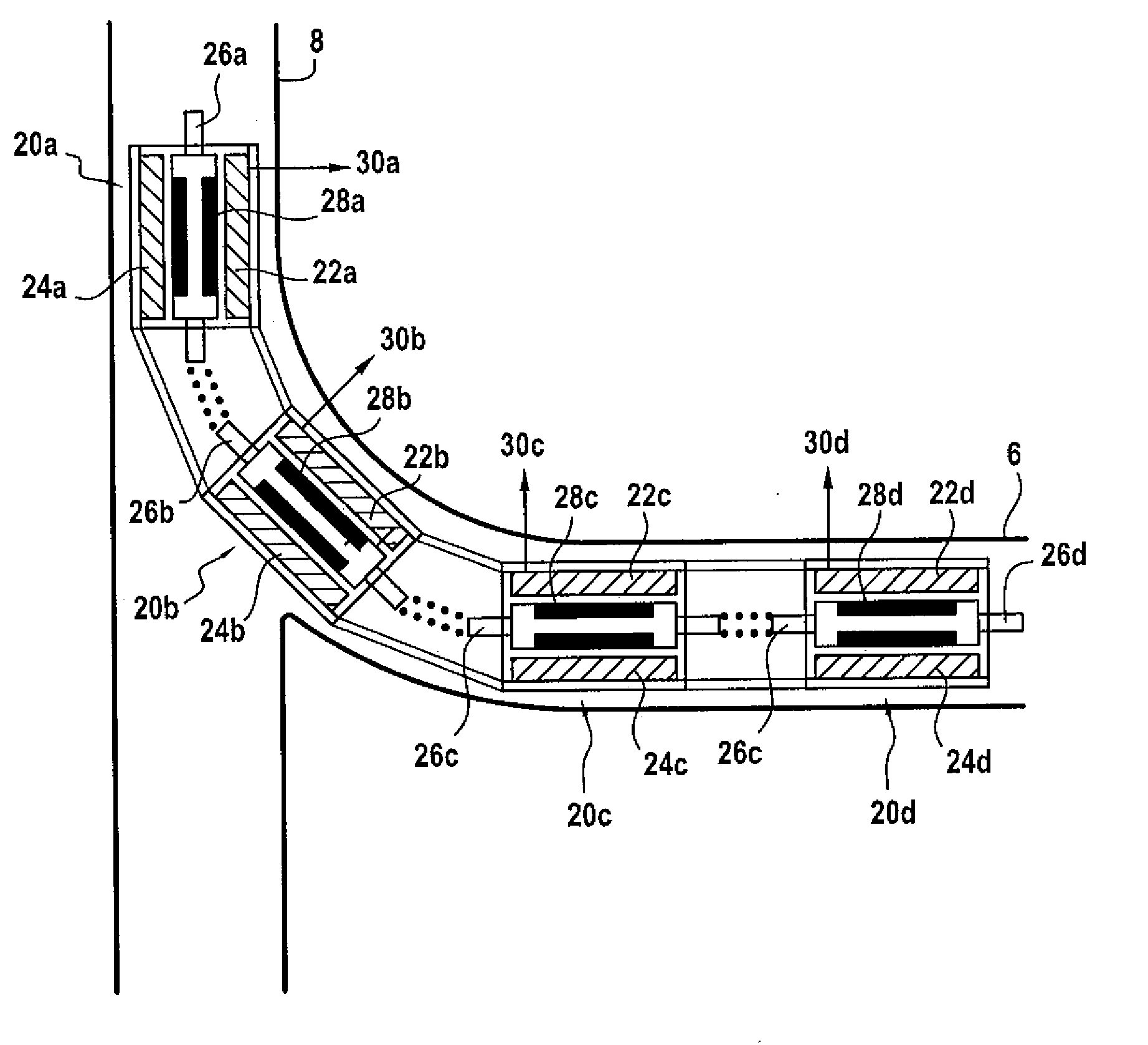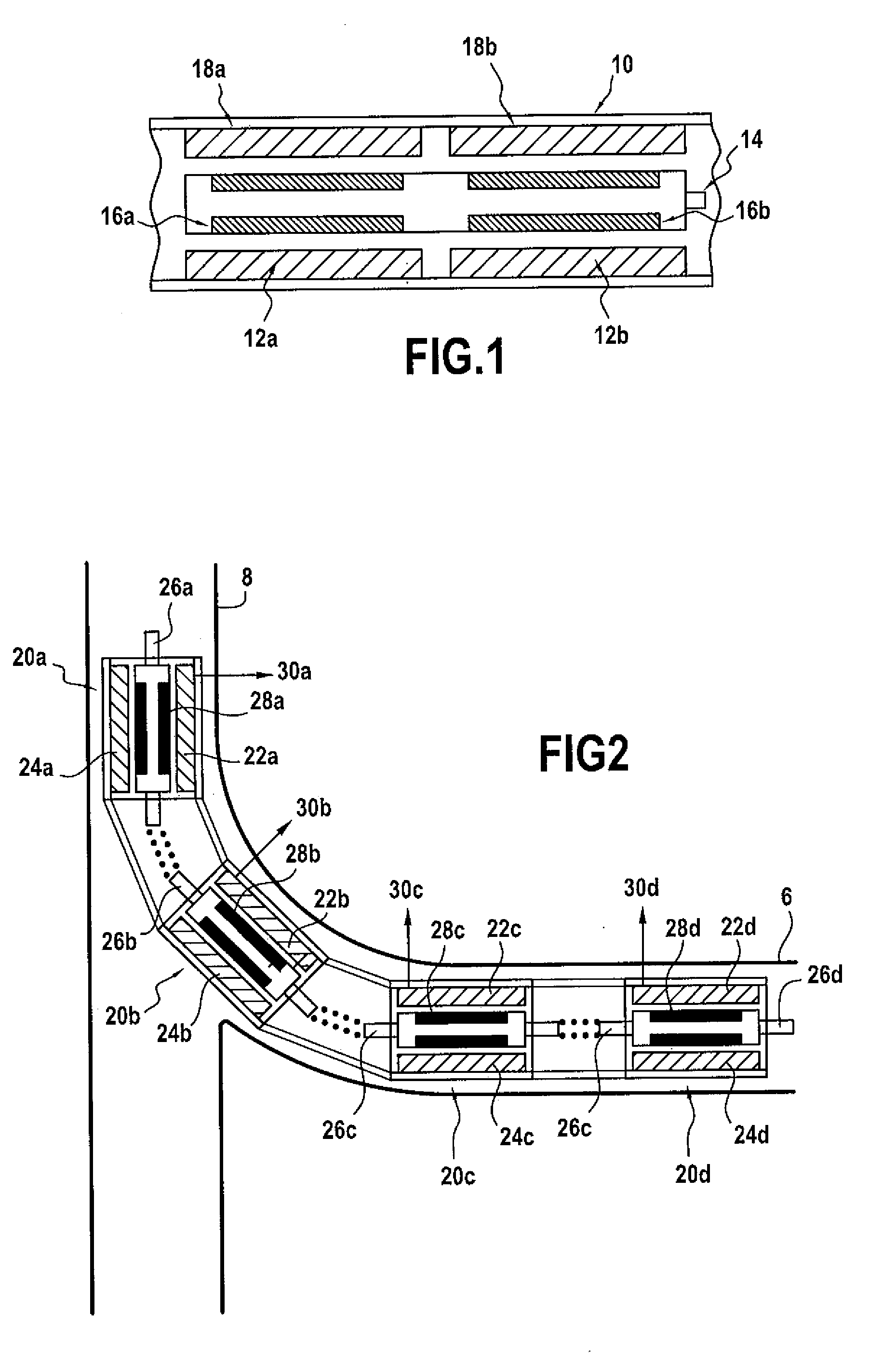Electronic Motor
- Summary
- Abstract
- Description
- Claims
- Application Information
AI Technical Summary
Benefits of technology
Problems solved by technology
Method used
Image
Examples
Embodiment Construction
[0020]FIG. 1 shows a schematic view of part of a motor section of a borehole tool such as a drilling tool for drilling lateral boreholes. The motor comprises a cylindrical housing 10 of normal size for placement in a borehole. Stator windings 12a, 12b are provided inside the housing 10, spaced apart in the axial direction. An output shaft 14 is mounted for rotation inside the housing so as to be coaxial with the stators 12a, 12b. Rotors 16a, 16b are mounted on the output shaft 14 and positioned to align with the stator windings 12a, 12b so as to define motor sub-units. Each sub-unit is connected to a respective power supply and control system 18a, 18b. One particularly preferred form of motor sub-unit is formed from stators and rotors of the type used in conventional motors for borehole tools. Such motors are commonly synchronous brushless motors which are preferred for their great power density and high reliability, but other forms of motor such as asynchronous AC motors and DC mot...
PUM
 Login to View More
Login to View More Abstract
Description
Claims
Application Information
 Login to View More
Login to View More - R&D
- Intellectual Property
- Life Sciences
- Materials
- Tech Scout
- Unparalleled Data Quality
- Higher Quality Content
- 60% Fewer Hallucinations
Browse by: Latest US Patents, China's latest patents, Technical Efficacy Thesaurus, Application Domain, Technology Topic, Popular Technical Reports.
© 2025 PatSnap. All rights reserved.Legal|Privacy policy|Modern Slavery Act Transparency Statement|Sitemap|About US| Contact US: help@patsnap.com


